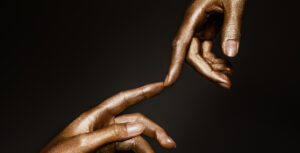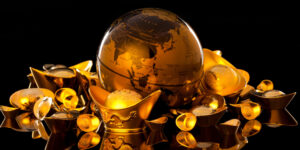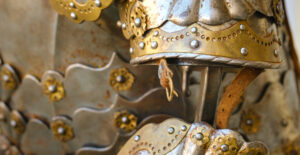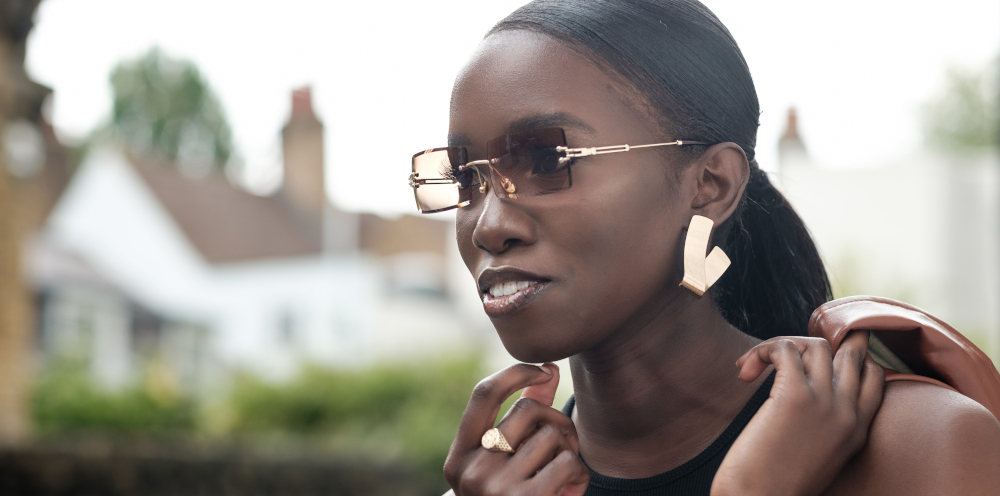
She’s ten years old, maybe eleven. Her braids are fresh, her bangles catch the afternoon light, and her lip gloss, borrowed or bartered, shines like a promise. She isn’t headed to a pageant or a dance, just walking home from school, bookbag light but her look heavy with intention. In townships and informal settlements, in city flats and rural schools, she is one of many. Young girls across South Africa who understand, far earlier than they should, that presentation is more than play, it is currency, armor, and sometimes, rebellion. They don’t have much. But they have style. And with that style comes a quiet, resilient economy that trades in aesthetics, status, and survival.
There’s a kind of pride you see in the mirror when everything you own is pieced together from love and hustle. It’s the lip gloss your cousin gave you, the hand-me-down denim jacket stitched with rhinestones, the beaded earrings you made yourself from an old hair clip. Every item carries a story, a trade, a debt, or a dare. The bangles aren’t from a boutique, they’re from a street stall, five for ten rand, and the girl knows exactly which vendor will let her pay in two parts. Her school shoes are polished, not because anyone told her to, but because unpolished shoes suggest chaos, and chaos is unsafe. She knows this without being taught. In a world where young black girls are too often told they must wait to be seen, they carve visibility from the things they can control. Their hair. Their nails. Their walk. Their bangles.
This glam, this soft protest, is not vanity. It’s economics. It’s the decision to spend R15 on gold hoops instead of lunch, not because you’re foolish, but because the hoops might keep the bullies at bay or catch the right kind of attention in a room where attention equals opportunity. It’s a tube of mascara being shared between three girls at a taxi rank bathroom before school. It’s knowing how to use sunlight, Vaseline, and confidence to look like someone who might be going places. These are not accessories. These are tools of navigation.
What looks like sparkle is often shadow. Behind each carefully assembled outfit is a cost not always counted in rands. There’s the girl who chooses to skip a meal to keep her lashes looking right. The teen who steals a bottle of nail glue from the local China shop because she’s tired of feeling invisible. There’s the young woman who understands that a R60 manicure will get her further in a job interview than an extra taxi fare home. In this economy, girlhood is not just soft, it is strategic, creative, and sometimes, heartbreaking. They are learning capitalism with no textbooks. Just faces, filters, and whatever is trending on TikTok.
Parents notice but rarely speak. A mother might shake her head at the shimmer but still hand over change for hair gel. A gogo might mutter about “young girls these days” while handing over her old scarf to be repurposed as a headwrap. These adults remember their own versions of glam, church hats, Sunday shoes, Vaseline on cheekbones. The forms change, but the need to belong, to glow, to announce “I’m here” remains a generational inheritance. The tension lies in the trade-off, when bangles come before bread, what message is passed down?
In some spaces, this economy flourishes openly. Township salons double as classrooms. Here, young girls watch, learn, and eventually earn. A ten-year-old might not know her times tables, but she can braid cornrows tight enough to bring tears, apply lip liner with surgical precision, or hustle a bottle of perfume diluted just enough to double her profit. Beauty is not just maintenance. It’s a side hustle, a survival tactic, and sometimes, an exit plan. There are high schoolers funding their studies with weekend lash appointments. There are girls who’ve never left their township but can contour a nose better than any YouTube influencer.
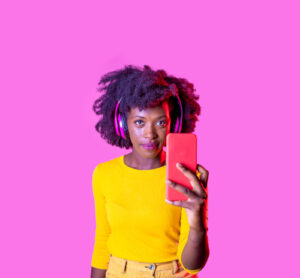 But it’s not just about looking good, it’s about being seen. In environments where visibility often depends on appearance, glam becomes a language. A gold bangle on a skinny wrist says, “I’m not poor, I’m participating.” A glossy lip says, “I know the trends.” Acrylic nails signal that you’re current, connected, maybe even protected. These cues open doors, or at least, keep some shut ones from slamming too hard. Glam is negotiation. Sometimes it’s camouflage. And often, it’s defiance. When the world expects your head to be down, raising your chin becomes an act of resistance.
But it’s not just about looking good, it’s about being seen. In environments where visibility often depends on appearance, glam becomes a language. A gold bangle on a skinny wrist says, “I’m not poor, I’m participating.” A glossy lip says, “I know the trends.” Acrylic nails signal that you’re current, connected, maybe even protected. These cues open doors, or at least, keep some shut ones from slamming too hard. Glam is negotiation. Sometimes it’s camouflage. And often, it’s defiance. When the world expects your head to be down, raising your chin becomes an act of resistance.
The market responds. Informal vendors now sell hair glue, press-on nails, and knockoff brands with the same urgency as they sell airtime and vetkoek. WhatsApp groups share the location of pop-up sales. Sidewalk stylists advertise services with printed flyers taped to lampposts. There’s a quiet boom here, and it’s mostly powered by girls. Girls who know that looking expensive can buy you time, attention, or safety, even if your shoes are falling apart at the soles.
It’s easy to dismiss this glam as frivolous. But that’s the mistake adults often make, believing that because something sparkles, it isn’t serious. Bangles before bread is not about recklessness, it’s about choosing identity in a world that tries to erase you. It’s about constructing a self when you can’t afford to buy one ready-made. It’s about negotiating public space when your body is both politicized and policed. It’s about community, because even when there’s nothing to eat, someone always has a hair straightener, a borrowed lipstick, or a TikTok filter that makes you forget, even for a moment, how hard everything is.
These girls aren’t foolish. They’re fluent in a language adults pretend not to understand. They know what a small tube of lip gloss can do for a shattered mood. They know that being noticed might be the difference between being chosen and being forgotten. They know how to build beauty from leftovers, pride from pressure, confidence from crumbs.
And one day, when their bangles are real gold, when the meals come before the make-up, they will remember what it cost to shine with nothing. They will remember the economy of girlhood glam, the choices made, the bread missed, the glitter that held everything together when the world tried to pull it apart.

